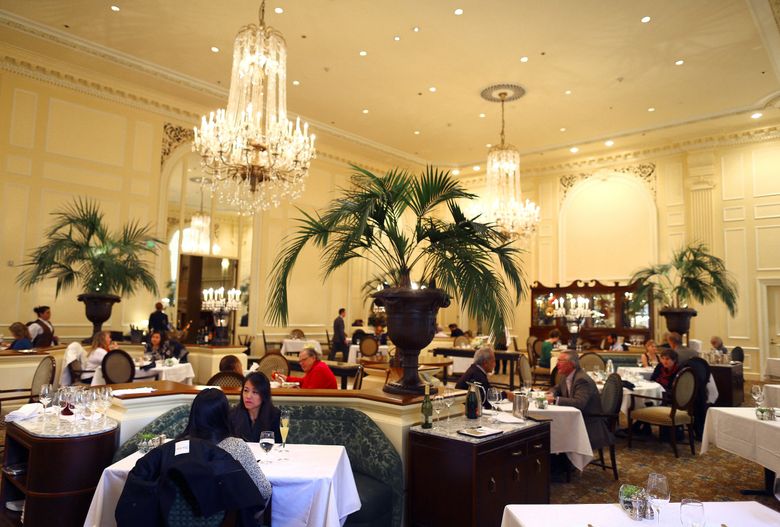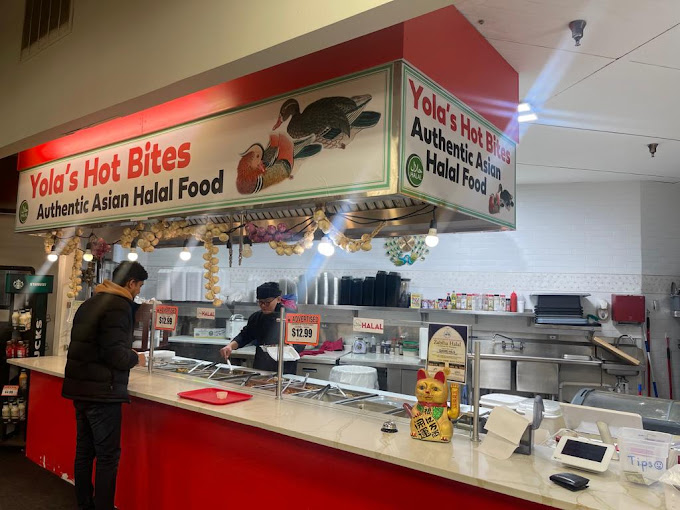Best Ambiance Restaurants Islamabad: Perfect Destinations for a Memorable Meal
Wiki Article
Savor Authentic Eastern Cuisine With a Pan-Asian Spin for a Cooking Journey
Beginning on a culinary journey through authentic Eastern cuisine, improved with a Pan-Asian spin, uses a distinct chance to check out the rich tapestry of flavors that specify the area's varied culinary traditions. As you ponder these enticing dishes, consider the cultural stories and historic influences that shape them, each bite supplying a tale waiting to be discovered. pan asian dining Islamabad.
Checking Out Pan-Asian Tastes
In the world of international gastronomy, Pan-Asian cuisine attracts attention for its exceptional variety and the harmonious interaction of flavors from numerous Asian societies. This culinary strategy celebrates the special ingredients and abundant practices discovered throughout the continent, creating a tapestry of tastes that is both interesting and satisfying. Secret to Pan-Asian food is its capability to stabilize different flavors-- pleasant, salty, spicy, and sour-- while highlighting the quality and quality of each active ingredient.From the umami-rich soy sauce of Japan to the fiery chili peppers of Thailand, Pan-Asian food uses a comprehensive scheme of flavors. These components are commonly combined in creative ways, boosting dishes with layers of intricacy. For circumstances, using aromatic natural herbs such as lemongrass and cilantro, typical in Vietnamese and Thai food, includes a rejuvenating illumination to meals, while the consolidation of coconut milk delivers a creamy, rich appearance.
The emphasis on fresh produce and aromatic spices makes certain that each meal is not only a banquet for the preference buds yet additionally for the senses. Pan-Asian food welcomes restaurants to start a culinary journey, checking out the substantial and varied landscapes of Oriental gastronomy with every bite.
Blend Recipes to Try
While Pan-Asian cuisine is celebrated for its conventional tastes, the modern-day cooking landscape is progressively welcoming combination dishes that mix these classic components with impacts from various other regions. This innovative technique not only honors the abundant heritage of Oriental cooking arts yet likewise introduces unique taste experiences that interest contemporary tastes buds.
An archetype of such a blend meal is the Korean-Mexican taco, where marinated bulgogi beef is covered in a warm tortilla, covered with kimchi and a spicy gochujang-infused salsa. This mix weds the bold, savory tastes of Korea with the vibrant, fresh components of Mexican cuisine. Similarly, sushi burritos have obtained appeal, amalgamating the fragile creativity of Japanese sushi with the hearty, hand-held ease of a burrito, usually featuring combination components like tempura shrimp and avocado with a drizzle of wasabi mayo.
One more significant recipe is Thai curry ramen, which infuses the creamy, aromatic seasonings of Thai curry right into the reassuring brew of typical Japanese ramen, creating a harmonious blend that entices the senses. These fusion meals expand past mere novelty; they stand for a cooking discussion in between societies, encouraging expedition and innovation on the planet of Pan-Asian food.
Vital Active Ingredients and Spices
To really appreciate Pan-Asian cuisine, one need to comprehend the crucial components and flavors that develop its foundation. This diverse cooking design attracts from an abundant tapestry of Asian practices, utilizing an unified blend of flavors and textures. Key ingredients include click to read soy sauce, fish sauce, and oyster sauce, which present a mouthwatering umami depth important to Oriental meals. Corresponding to these are rice vinegar and mirin, lending a fragile level of acidity and sweet taste.Aromatic aspects are essential, with lemongrass, garlic, and ginger being common throughout different Pan-Asian recipes. These components supply an aromatic base that enhances the intricacy of tastes. Flavors such as star anise, cardamom, and cinnamon introduce heat and personality, resembling influences from regions like China and India.

Cooking Methods and Tips
Understanding the art of Pan-Asian cuisine needs knowledge with its distinct cooking methods, each adding to the vibrant tapestry of flavors this cooking tradition is celebrated for. Central to these approaches is the stir-fry, a fast food preparation method that maintains the dietary stability and vivid colors of ingredients. Using a frying pan, the stir-fry approach permits for also heat distribution, necessary for attaining the particular texture and taste equilibrium of Pan-Asian recipes.Another fundamental method is steaming, especially widespread in Chinese food. This mild approach maintains the all-natural flavors and nutrients of components, making it perfect for seafood and read vegetables. Dumplings, a beloved staple, often profit from steaming, leading to soft, succulent appearances.
Cooking, additionally essential, passes on smoky depths to dishes such as Korean bulgogi or Japanese yakitori (asian fusion restaurant). This method usually entails marinating ingredients, allowing flavors to penetrate deeply prior to cooking over an open flame or hot plate
Last but not least, grasping the art of stabilizing flavors-- sweet, sour, salted, bitter, and umami-- is critical. Appropriately layering these aspects can elevate a recipe from ordinary to phenomenal, using a complicated and satisfying cooking experience that symbolizes the essence of Pan-Asian food.
Dining Experiences Worldwide
Across the world, Pan-Asian cuisine offers an exceptional dining experience, celebrated for its rich tapestry of tastes and dynamic presentations. This cooking phenomenon has actually transcended social boundaries, recording the hearts and palates of food fanatics worldwide. In cosmopolitan cities like New York, London, and Sydney, Pan-Asian restaurants work as fusions where culinary practices from Thailand, Japan, China, and beyond merge, providing diners with an eclectic mix Source of dishes that highlight the area's variety.The global appeal of Pan-Asian food hinges on its capacity to provide both credibility and advancement. Cooks skillfully wed typical ingredients such as lemongrass, soy sauce, and miso with contemporary techniques, resulting in meals that are both acquainted and refreshingly new. This fusion enables restaurants to get started on a cooking journey that respects heritage while welcoming modernity.
Additionally, eating experiences are raised through thoughtfully created settings that mirror the principles of Pan-Asian appearances. From minimal Japanese-inspired interiors to dynamic Thai-themed spaces, each restaurant provides a distinct atmosphere that matches the culinary offerings. Because of this, patrons are not simply eating a meal however partaking in a social experience, making Pan-Asian eating a really global phenomenon.
Conclusion
The expedition of Pan-Asian food uses an extensive understanding of the detailed interaction of tastes and cooking customs across Asia. By accepting fusion dishes such as Thai curry ramen and sushi burritos, the culinary journey not only highlights the adaptability of standard ingredients but additionally showcases cutting-edge modern-day strategies. This gastronomic experience, improved by cooking methods and important spices, gives an unique possibility to value the multiculturalism and cooking creativity that define Pan-Asian cuisine on a global range.Getting started on a cooking journey through authentic Oriental cuisine, enhanced with a Pan-Asian spin, offers a distinct chance to discover the rich tapestry of tastes that define the region's varied culinary traditions.In the realm of international gastronomy, Pan-Asian food stands out for its remarkable diversity and the unified interplay of flavors from different Asian societies. Key to Pan-Asian cuisine is its ability to balance different tastes-- sweet, salted, spicy, and sour-- while highlighting the quality and quality of each ingredient.

Report this wiki page